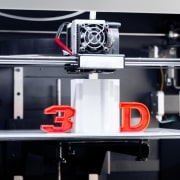Jaw Pain on One Side: What’s Causing It?
Jaw pain on one side can be annoying, particularly if you can’t point out a reason for it. We’ll look at the possible reasons why you might want to see adentist in Houston, TX, to learn more about the root cause.
1. Sinus Issues
When your sinuses become inflamed, they pressure your cheeks. The more pressure, the more likely you are to feel in your jaw as well. Sinusitis is most often associated with a cold, but you can develop it with allergies or other conditions. If your jaw pain is also accompanied by mucus, congestion, and fatigue, you may find your jaw pain clears up once your sinuses do.
2. Dental Disorders
Teeth and gum issues can manifest as jaw pain. If you’re having problems on one side, it may be due to an infected tooth or gum disease. Jaw pain can also be caused by misaligned teeth or clenching or grinding while awake or asleep. A dentist may recommend anything from a root canal to a laser gum treatment as a way to relieve the pain.
3. TMJ
The temporomandibular joint (TMJ) links your skull and jaw. If it’s misaligned or otherwise damaged, you can start to feel tenderness or pain when opening your mouth or chewing your food. If an earache also accompanies the jaw pain, this is one of the biggest indicators of TMJ.
See a Dentist in Katy, TX
If you’re havingjaw pain in Katy, TX, a dentist can begin to rule out the causes so you can identify what’s really happening behind your skin. Chloe Dental has locations in Houston and Katy to help patients get the right diagnosis.











